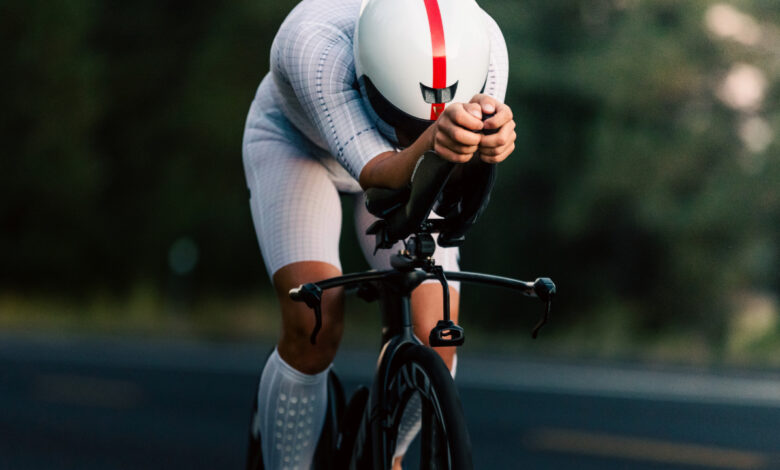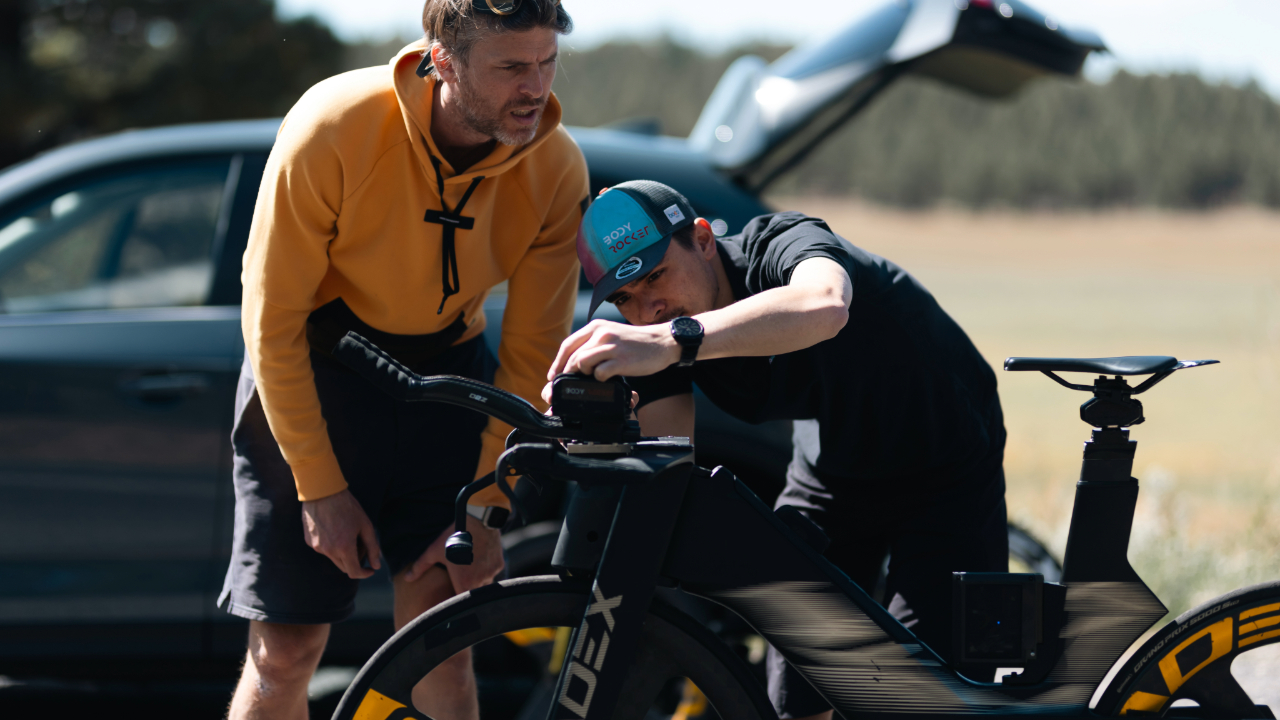What is Body Rocket? The ‘mobile wind tunnel’ helping triathlon greats take aero to the EXTREME

Triathlon bike splits are getting faster and faster, with the PROs hitting eye-watering speeds as they blast out of T1. The bar is constantly being raised for what’s required to be competitive – for PROs and age-groupers alike. Which means optimising aerodynamics is becoming a fine art. From helmet choices, to bottle placements. Triathletes these days are looking to refine every single detail, to get that extra 1% wherever they can find it.
And while some of the top level PROs can get access to wind tunnels to test, and re-test, their set up. For many, wind tunnel time is like gold dust – or not accessible at all. But now the small team at Body Rocket are looking to bridge this gap, changing the game with real-time data capture technology that brings the aero testing of the wind tunnel to real-world scenarios. Allowing more triathletes and cyclists to test their aerodynamics – more often.
So what is Body Rocket, and how does it work? We met some of the team at an outdoor velodrome to hear more about the technology, and to test it out for ourselves.
What is Body Rocket? How the cycling aero testing technology works
The Body Rocket system is the first of its kind to provide real-time direct force drag measurement. Fitted directly onto the bike, these sensors isolate the rider and measure exactly how much drag the rider’s body position creates. This is vital, because optimising your position on the bike can have a huge impact on how aerodynamic you are. Matt Hutchings, part of the expert team from Body Rocket, explains further.
“What we’ve done is take the concept of a wind tunnel, shrink it, and put it onto a bike. Essentially, we’ve moved the wind tunnel into a real-world scenario.”
“With the Body Rocket system, we have four sensors. One under the saddle, one under the TTs and one on each pedal. The pedals also double as the world’s most accurate power meters. Alongside these four sensors, we also have an airspeed sensor at the front.”

“With these sensors, every part of the bike you engage with is monitored. This means we can isolate you, the rider, from the bike and measure both vertical and horizontal forces applied to you. Most importantly, we focus on horizontal forces because 80% of your aero optimisation comes from positional changes.”
The sensors work out the rider’s CdA (coefficient of drag area), measuring how much drag the rider’s body creates. It’s similar to the data you’d get from riding in a wind tunnel. But unlike a wind tunnel, the sensors take the measurements in real-world scenarios, such as riding around an outdoor velodrome. And the Body Rocket system can provide real-time feedback while you ride through a bike computer. You can then also review all your aero data via a dashboard post-ride. The Body Rocket system allows cyclists and triathletes to test out various set-ups, riding positions and gear in real-world scenarios.
“We typically see a 15-20 watt saving in the first session [with Body Rocket] just by tweaking positions. Equating to significant time savings over various distances.”

Make the world your wind tunnel
How does it compare to testing aerodynamics in a wind tunnel?
In a wind tunnel, air is pulled through the tunnel and passes over the rider to measure drag. And while different yaw angles can be tested to simulate cross winds. The rider and the bike are stationary the entire time – meaning the natural changes in your riding position as you turn corners or get hit by cross winds are not accounted for.
Body Rocket essentially takes the capabilities of a wind tunnel, and puts in on your bike. So you can measure the same data, in real-world conditions factoring in headwinds, rolling resistance, changing temperatures and the constant micro adjustments to your position you make while riding in the real world. This means you can find the bike position which is truly the most aero, taking into account all of these real-world factors.
It also means riders are no longer reliant on booking dedicated time in a wind tunnel to test out different positions and apparel. You can aero test on the move, during a training session.
Interpreting the data – do you need to be an aerodynamics engineer to make sense of the findings?
From our wearables to our bike computers, we have access to more data about our health, fitness and performances than ever before. But plenty of us will admit we don’t always know what that data really means, and what (if anything) we need to do with it.
And of course one of the benefits of going to a wind tunnel is that you’ve got an expert there with you to interpret and analyse all the data. The good news is, Body Rocket have developed their own AI coach – Brian – to help you understand, interpret and implement the findings of your aero testing.
‘Brian’ will help you to experiment with your TT position to find the most aerodynamic set up. And then he’ll go ahead and create a training protocol to go alongside your new position. Meaning you don’t need to be an aero expert or a data-whizz to benefit from the insights the Body Rocket system can deliver.
Who is using Body Rocket? How the Norwegian Method has adopted the aero technology
Two of the highest profile adopters of the Body Rocket system are Norway’s Kristian Blummenfelt and Gustav Iden. The ‘Norwegian Method’ implemented by coach Olav Aleksander Bu has become synonymous with using data to its furthest capability to optimise training.
The Body Rocket team have been working with Blummenfelt and Iden for the last few years, causing a stir in the build up to this year’s IRONMAN World Championship in Kona as the pair were able to debut extremely aero bike positions just weeks before the race.
“[Kristian and Gustav] haven’t used a wind tunnel since working with us,” Matthew from Body Rocket explains. “Instead, doing all their aero testing with the Body Rocket system. This not only allows them to optimise aero while training, but also helps them to avoid breaking their training cycle to travel to a wind tunnel.”
Body Rocket even worked with triathlon apparel brand Surpas to fine tune Kristian’s kit for Kona, ensuring it was as aero as possible as the Olympian and former IRONMAN World Champion prepared to face the fierce, fiery winds of the Big Island out on the bike course.

Make the world your wind tunnel
TRI247 put Body Rocket to the test
The concept of a mobile wind tunnel that can give real-time aerodynamic data feedback sounds pretty intriguing. So we were keen to go and check it out for ourselves. We met up with some of the Body Rocket team at an outdoor velodrome to learn more about the tech, and to do some testing to see how much time theoretically we could save over a 180km Ironman bike ride by making positional adjustments on the bike. Watch the video below to see how we got on!

